We are offering a private tour up to 3 people (usually 2 people) in a luxury car Lexus or Audi. And for groups up to 6 people we are offering Volkswagen Transporter and Van Mercedes V class. Our tours are on Private, only your family or group of friends.
Usually we don’t need payments in advance but you always have that option.
We accept Bank transfer to our Company account in Asturias Spain or by credit card, we accept all credit card by Square payments.
All our groups are tailored if you want. This tour has three options.
1.- first and last day Madrid
2.- First day Santiago compostela and last day in Bilbao
3.- first day Bilbao and last day Santiago compostela
Day 1:
Pick up at your Hotel to start the journey to Finisterre.
For the Romans, this was the westernmost point of the known world.

It is also the traditional place where the Camino de Santiago ends; being here the Km. O.
After an hour, we continue to Ezaro River Falls. This is the only river in Europe that cascades falls directly into the sea.
Around two o’clock we will arrive to La Coruña.
La Coruña highlights: Tower of Hercules, Roman lighthouse 102 metres high. To climb to the top there is 242 steps.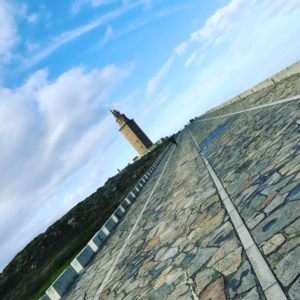
Viewpoint of San Pedro. There is a panoramic elevator that takes us up to the top of the mountain, giving us wonderful views of La Coruña. At the top there is a restaurant where we can have a coffee, to continue to Coruña for lunch.
One of my favorite restaurants of popular food is:
O’bebedeiro restaurant (I don’t know if it will be the best restaurant in Coruña, but it is one of the favorite for the locals. I am passionate about “Octopus with clams” cooked with oil and garlic).
After lunch and a short walk to Maria Pita Square. (town hall) We`ll be going back to Compostela.
Arrival to Santiago around 17-18 so we`ll enjoy walking downtown of Santiago de Compostela.
Day 2:
We leave Santiago in the direction of Chantada.
Chantada: We will stroll through the picturesque shopping mall, then we will start our tour of various architectural jewels of Galician Romanesque architecture.
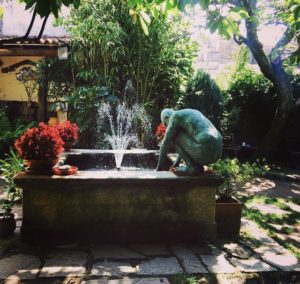 The Monastery of Santo Estevo de Ribas de Sil dates back to the 9th century. was added the Church of Santa Cristina de Sil in 12th century
The Monastery of Santo Estevo de Ribas de Sil dates back to the 9th century. was added the Church of Santa Cristina de Sil in 12th century
It is a Romanesque church to which Gothic dressings were added as its construction progressed.
In the interior there are frescoes, the main altar with geometric motifs, baroque altarpieces and an image of St. Peter by the artist Juan de Anges at the end of the 16th century. On the walls of the sacristy are shields of the Order of Calatrava and Saint Stephen.
We follow our tour to the church of San Pedro de Rocas.
The oldest in Galicia (5th century) Romanesque style.
The monastery’s 6th century church is one of the oldest known Christian temples. Its three ships are dug into the rock. In it was discovered a fresco mural painting, dated between 1175 and 1200, showing images of the apostles and a world map.
We can also see some sculpted tombs in which figures are depicted lying. On the floor of the church and the atrium there are numerous tombs carved into the rock. The church site was extended with a new nave of later construction. The bell tower, built by Gonzalo de Penalva in the 15th century, is located at the top of an enormous rocky formation almost 20 m high that gives its name to this place.
An archway serves as access to a small space, used until recently as a parish cemetery. It is quadrangular in shape and is enclosed by a wall.
We continue to Sober: To the pier of Os Chancís where we start a catamaran crossing on the river Sil.
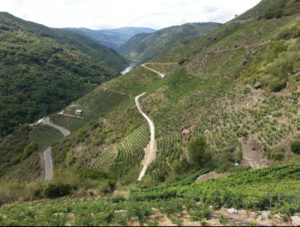
This route is the most spectacular of the entire Sil Canyon due to the verticality of its banks, which in some areas are over five hundred metres high. The chestnut, oak and cork oak forests alternate in the landscape with the vineyards cultivated on terraces on sometimes almost vertical slopes. The small size of the boat allows you to stop anywhere on the river and get close to the shores to see the impressive examples of the so-called heroic viticulture or to listen to the noise of the streams that flow into the Sil.
(You can rent the whole boat for 170€ per hour)
We will continue with a visit to a winery that is an example of the Heroic Viticulture of this region. Adega Malcavada: Production of just 3,000 bottles per year. The vineyards are located in the canyon with a 60º inclination.
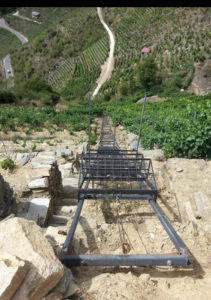 At 19:30 return to Compostela. Arrival 21:15pm
At 19:30 return to Compostela. Arrival 21:15pm
We also have the option of staying in Casal de Armán.
Hotel+restaurant + winery. And return the next day to Compostela.
Day 3:
We leave with the luggage from the hotel in Santiago de Compostela towards Gijón. First stop in Lugo.
Lugo: Visit to the wall. The Roman wall that surrounds the city of Lugo is the only one in the world that remains intact. For this reason and because of its mysterious beauty, it is a World Heritage Site.
Legend tells that the Romans built the wall to protect not a city but a forest, the “Sacred Forest of Augustus”, in Latin “Lucus Augusti”, hence the name of Lugo. Today the forest is a mystery, but the wall still stands, defying time and speaking to those who know how to listen to it.
Built more than 17 centuries ago following the guidelines of the elegant works of Vitruvio, the wall of Lugo measures more than 2 km and has 10 doors. Walking along the top of the wall, which in some sections reaches 7 m wide, and stopping at some of its 71 towers (of the original 85) is like feeling the power of Imperial Rome.
We continue towards Rinlo with the intention of eating in the restaurant A Cofradia its specialty: Rice with lobster, a delight.
After lunch we will visit the Cathedrals Beach, one of the 10 most beautiful beaches in the world according to Tripadvisor.
There is usually controlled access and advance booking is required.
Our next stop is Playa del Silencio, a view that really deserves to be stopped for a few photos.
Next stop at Cabo Vidio.
At our last stop today, we will have a coffee and enjoy the magic of Cudillero: the most picturesque fishing village in Northern Spain.
We end the day arriving at our hotel in Gijón.
Day 4:
We start the day from the hotel, to visit different places in Gijón.
Cerro de Santa Catalina: It is a park where we find “The Praise of the Horizon” one of the best works of the sculptor Chillida.
We continue to Laboral Ciudad de la Cultura: Ascent in the elevator after seeing the curious example of Herrerian-style architecture.
We continue to Luanco: to visit the historical centre of this seaside town. After this small village we will arrive at Cabo Peñas, which is the northernmost cape.
We direct our steps now to Oviedo: Stately town.
And as his coat of arms says: “Very noble, very loyal, well deserving, undefeated, Heroic and good city of Oviedo”.
We will visit the Cathedral and within that visit also
The Holy Chamber: The Holy Chamber of the Cathedral of Oviedo looks luminous and splendid since its last restoration, which has made it possible for it to show its medieval beauty to the public since the 14th of April, making it a symbol of Asturias and a significant religious, cultural and tourist attraction. Founded as a palatine chapel by an Asturian king, named by history as Alfonso II the Chaste, and who lived and loved in the ninth century, the Holy Chamber of the Cathedral of Oviedo has been an active witness to thousands of stories and vicissitudes: a meeting point for pilgrims, devotees, travellers, adventurers and even revolutionaries. For all of them, in one way or another, it has been an unavoidable reference. As its creator, the Holy Chamber was home to the spiritual dream of thousands of people who, from the 9th century to the present day, approached the sacred enclosure for different purposes and with a common feeling: before their eyes stood one of the best-kept treasures of the culture and history of Western Europe in the last thousand years.
After the visit we go up to Santa Maria del Naranco and San Miguel de Lillo: Santa Maria del Naranco is a church located in the region of Oviedo (Spain), on the southern slope of Mount Naranco, it is an architectural construction of pre-Romanesque Asturian style, which we will discuss later. In fact, it was not always a church, as its construction was commissioned by Ramiro I de Asturias (840-850) as his royal residence or Aula Regia. This complex included the royal estancias and the nearby Church of San Miguel del Lillo, only a few meters away. Later, around 857, the Palace was transformed into a church by the donation of Ordoño I to San Salvador de la Villa de Liño.
The last stop today will be in San Julían de los Prados or Santullano; the third pre-Romanesque church of Oviedo. We end the day at the hotel in Gijon.
Day 5:
We leave first thing in the morning from Gijón with the luggage for Santander. Our first stop will be in Cangas de Onís, where we will have our photo taken and cross the “Roman bridge”, the emblem of Asturias.
We will go up to Covadonga to visit the Sanctuary of Covadonga, the Santa Cueva and the Basilica. Afterwards we will continue, if the weather and road conditions allow it, to the Enol and Ercina Lakes.
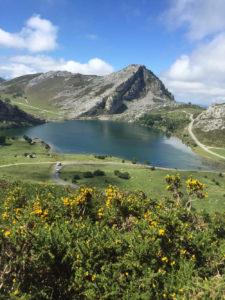 After this we can go to the “Molín de Mingo” to enjoy its yummy “rice with Pitu de Caleya”…..
After this we can go to the “Molín de Mingo” to enjoy its yummy “rice with Pitu de Caleya”…..
After lunch we will make a brief visit to the Santa Marina beach promenade, where we will contemplate the buildings built by the “indianos” emigrants who came to America and returned with great fortunes.
End of the day in a hotel in Santander.
Day 6
We start the day first thing in the morning, destination Comillas.
Comillas: Visit to Gaudí’s “El Capricho” . Modernist building designed by Gaudí. It corresponds to Gaudí’s Orientalist period.
Ancient cemetery of Comillas: This place has a curious history, abandoned in the 16th century after a discussion between the neighbors and the administrator of the Duke of Infantado. All the neighbors vowed never to set foot in the church again.
Sobrellano Palace: 45 minutes of visit. Eclectic and Neo-Gothic style. Also here we will find several creations of Gaudí. 20 minutes visit to the Chapel.
We follow Santillana Del Mar:
This village is the most important historical and artistic site in the north of Spain, where the Collegiate Church of the 12th century stands out. The old town has remained intact since the 19th century and the buildings are mainly from the 16th-17th century. The cloister of the Collegiate Church is open to payment and has a limited opening hours. A jewel of antiquity.
Nearby is the Altamira Cave: where we can visit an exact copy of it.
After this we return to Santander. And the end of the day.
Day 7
We leave the hotel in Santander towards Bilbao.
Our first destination will be Gernika.
Gernika: Visit to the Meeting Room. Guernica tree. Peace Museum.
On Mondays it is highly recommended to visit the market, where products from the orchard are sold.
Lekeitio – Bermeo: Brief visit to these typical fishing villages, where we will see the differences with the Asturian and Galician villages. We’ll follow to a magical place.
San Juan de Gaztelugatxe:
Linked to the peninsula by a bridge with two arches, this promontory consists of 241 steps, is a dominant rock that simulates a castle in the water that was called from ancient Gaztelu-aitz (castle rock). This hermitage is dedicated to Saint John the Baptist. According to legend, if you ring the bell three times and make a wish, it will come true.
Food in the area.
After lunch we will drive around the area. visiting:
Portugalete. (Eiffel Bridge)
Butron (castle)
Ixerrota (mill)
Final in hotel in Bilbao.
Day 8
BILBAO – Durango.
Durango: Arch of Santana, Old Town, Town Hall, The Cross Terminal of Kurutziaga.
Elorrio:
Old area. Stately villa. House of Jara (Berriotxoa Street), Arabo Palace.
Oñati:
Basque University, Urban Area, Plaza de los fueros, Town Hall, Lazarriaga Palace, Santa Ana Convent.
Highly recommended visit to the sanctuary of Our Lady of Arantzazu.
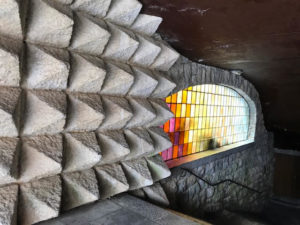
Lunch in Oñati and departure to San Sebastián.
SAN SEBASTIAN. Viewpoint of Monte Igueldo, Plaza del Funicular, Peine de los Vientos, Parte Vieja, Basílica Santa María, Centro, Plaza Constitución.
For me, the most beautiful thing about San Sebastian is to walk or sit on a bench on the Paseo de la Concha, and enjoy the pintxos in its bars and bars.
Day 9:
We leave the hotel in Bilbao towards Vitoria.
Vitoria: We start by visiting the cathedral of Santa Maria.
Behind the cathedral is “El Portalón” a medieval inn.
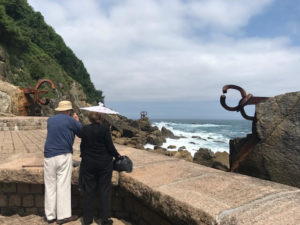
Then we will go to the Plaza de la Virgen Blanca, Iglesia de San Miguel. The New City and the Old City, its streets speak to us of the trades that were there, Painting, Cutlery. In the centre of the old town there are two Renaissance palaces, the Escoriaza- Esquivel and the Montehermoso palace. On the other side, the Cordon House and its incredible façade…
Palace of Villasuso and Viewpoint of Los Arquillos.
We can not miss the wall, accessible only with a guide, it is a walk of about fifty minutes. The Plaza de España (16th century) is a good place to relax and have a coffee in one of its terraces.
On the first Saturday of every month there is a flea market in the Plaza del General Loma. And the last weekend of September a medieval market is organized. Museum of contemporary art, and the Artrium restaurant.
Salinas de Añana: 30 kilometres from Vitoria.
In Santo Domingo de la Calzada.
Santo Domingo de la Calzada. For me the best place to establish the base for the visit of the region is the Parador de Santo Domingo.
Day 10:
We start the day by visiting the various interesting places in the area.
La guardia: One of the most beautiful old towns to visit. Its wall and the five access gates to the city are preserved.
Very interesting the polychrome portico of the church of Santa Maria de los Reyes. Also noteworthy is the Church of San Juan, which was originally a temple fortress. We can also visit the Abacial Tower. One of my favorite visits is to the Dolmen of the Sorceress, or “El Villar” dolmen of 12,000 BC. There are several dolmens among vines in this area.
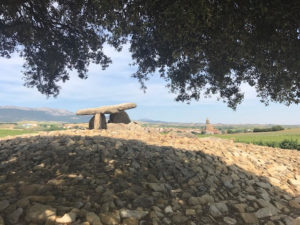
La Rioja:
There are dozens of wineries to visit in La Rioja, from an architectural point of view, Marques de Riscal, designed by Ghery and located in El Ciego, stands out. It is a brief visit to the outside of the building.
As for the history of wine and as an understanding of what a winery is, I recommend a visit to the wineries of Lopez Heredia (Tondonia, Beronia). It is a two-hour visit to an 1877 winery where we will taste three different wines. In front of us we have the Rioja Alta winery, where we can taste some other wine and shop.
A more adventurous and undoubtedly unforgettable proposal would be a hot air balloon ride over Bodegas Muga, in a package that includes a visit to the wineries. There are other wineries where we will stop in passing such as Bodegas Vivanco or Bodegas Ysios (Calatrava). The ideal is to dedicate 2 or 3 days from Santo Domingo de la Calzada to wineries, together with Laguardia, Haro, Logroño and the Monasteries.
Haro: In addition to Bodegas Muga and Lopez Heredia together with La Rioja Alta, we can visit the “La Herradura” area and enjoy the fantastic tapas made with products from the region’s exceptional vegetable garden in the bars of the area.
Monasteries of Suso and Yuso The oldest monastery dates back to the 15th century and is where San Millan de la Cogolla lived as a hermit.
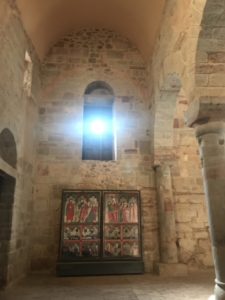 It is surprising to discover the life of the first Christians of the Iberian Peninsula. After the first monastery we will visit the newest Yuso. Where, for example, complete single copies of the Catholic Missal are kept.
It is surprising to discover the life of the first Christians of the Iberian Peninsula. After the first monastery we will visit the newest Yuso. Where, for example, complete single copies of the Catholic Missal are kept.
Not to be missed.
Logroño: After this cultural experience we deserve a gastronomic and oenological tribute, so we will walk along the street of Laurel, tasting different pinchos and wines.
Day 11:
Santo Domingo de la Calzada – Burgos
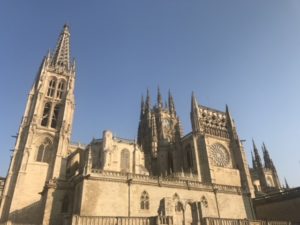 Cathedral of Burgos: It is one of the most beautiful architectural complexes of the Spanish Gothic style and has been declared a World Heritage Site by UNESCO. Its original and very personal design makes it a building that stands out for its harmony.
Cathedral of Burgos: It is one of the most beautiful architectural complexes of the Spanish Gothic style and has been declared a World Heritage Site by UNESCO. Its original and very personal design makes it a building that stands out for its harmony.
Just look at the twin needles that rise to the sky in a waterfall of lace. Inside the building, a bronze tombstone warns us that the legendary Cid Campeador, Rodrígo Díaz de Vivar, and his wife, Doña Jimena, rest there.
Its construction lasted from 1221 to 1765 and, although the Gothic style predominates, there are numerous artistic references throughout the building.
Aranda del Duero: There are thousands of reasons to visit Aranda de Duero, that small town or that large town representative of Castilian culture, which welcomes visitors with love to show them treasures such as the Casa de las Bolas Museum, the Sacred Church Museum of San Juan, the beautiful Church of Santa Maria, or its beautiful underground cellars, full of history, with more than seven kilometers of tunnels in the subsoil of Aranda.
A walk along the Douro River takes us directly to ancient times when the city was walled in. Food and end of day and tour in Madrid.
Terms and Conditions (provision of services).
Along the whole travel the client will be accompanied by the private driver, who is aware of the area and its touristic resources and places of interest to visit. The private driver will be at your side -as accompanying person- in the touristic visits if required so. Your private driver will take you to the nearest place available from the place to visit and will be ready at the ending of the visit to take the client again -as soon as possible- in order to maximize the use of the time in your holidays. Your private driver will assist you when booking in a restaurant or a hotel, getting tickets for places to visit and other interesting activities (out of those previously acquired). Your private driver will assist you with your luggage, at the beginning and at the end of each journey, and will provide you with specific information for your safety to avoid robbers and thieves, or any other necessary information that will improve your calm and enjoyment. Your private driver -within reasonable boundaries- will take care of the safety of the clients when present.
Drivers are NOT official tourist guides, but they are educated about those places to visit and will be able to provide you the cultural information surrounding those places. This will be done before the visit, as Spanish Law do forbid that non official guides will provide such information in those places.
Cancellation policy about car driver and car contracting.
(Does not apply in our partners hotel contracting)
Full refunds issued for cancellations made 7 full days prior to the date and time of requested services. Cancellations made within the 7-day and 72-hour window will receive a 50% refund of purchase total. Purchases are non-refundable inside of 72 hours.
More information about the this tour?